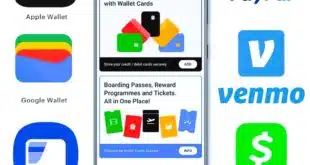Just three months after forging a landmark agreement with Visa Inc., and not quite two months after doing a similar deal with MasterCard Inc., PayPal Holdings Inc.’s top brass on Thursday indicated the agreements are already paying dividends for the San Jose, Calif.-based digital-payments company.
“Our customers are now able to set their preferred payment option to accounts other than PayPal,” Dan Schulman, chief executive at PayPal, said during the company’s third-quarter earnings call. “We’ve seen a corresponding increase in engagement.”
PayPal measures engagement in terms of number of transactions per active account, a metric it has watched closely since Schulman took over last year. By that measure, engagement stood at 30.2 transactions per account in the quarter, up from 29.4 in the second quarter and from 26.9 in the same period last year.
The Visa deal reached in July requires PayPal for the first time to stop promoting the low-cost automated clearing house network to account holders for account funding and to instead promote Visa cards. The MasterCard pact, announced shortly after Labor Day, has similar terms. In return, PayPal gets access to the networks’ tokenization engines on favorable terms to help fuel its long-held ambitions to scoop up in-store transactions, and MasterCard dropped a wallet fee it had imposed three years ago on PayPal.
“It’s a profitable way to move into the in-store environment,” Schulman told analysts during the Thursday earnings call.
But the company was able to point to increasing engagement in specific services, as well. Its highly popular Venmo person-to-person payments application hit $4.9 billion in volume in the quarter, a 131% increase year-over-year. Pay with Venmo, a service that allows users to pay merchants, is now generally available to all users, Schulman said, a factor that allows PayPal for the first time to start collecting revenue on Venmo. But it also offers one other benefit, according to Schulman. “Early data suggest people who use Pay with Venmo are 30% more engaged than the average Venmo user,” he said during the call.
Overall, PayPal mobile payments totaled $26 billion in the quarter, up 56% from a year ago, and accounted for almost 30% of PayPal’s $87 billion in quarterly volume. At this rate, Schulman projected mobile will generate $100 billion in volume over the next 12 months, half of the $200 billion it has cumulatively produced since PayPal launched it first mobile service 10 years ago.
Another growth market lies in a key authentication technology, One Touch, which now claims 32 million consumer users and 4 million merchant acceptors. Schulman predicted these numbers will climb to 36 million and 5 million, respectively, by the end of the year.
Buoyed by results like this, Schulman set an ambitious objective during the earnings call. “Our goal is processing 100% share of checkout for merchants,” he said.
But there are some cautionary notes for PayPal, as well. The deals with the major card brands may be helping to drive usage per account, but they’re also likely to be expensive relative to the lower fees PayPal had been paying for ACH funding.
At the same time, another closely watched metric, transaction take rate, dropped 19 basis points in the quarter, to 2.65%, compared to a year ago. The rate measures how much revenue PayPal is taking in relative to payment volume, and has been steadily drifting downward for over a year. The company blames the decline on a range of factors, including a “mix shift” to larger merchants with more negotiating clout and the increasing prominence of transactions from Venmo and the company’s Braintree unit. Most Venmo payments are free and Braintree volume is largely based on credit cards, which carry interchange expense.
In other third-quarter results, PayPal reported 192 million active accounts, up 11% year-over-year. Payment volume was $87.4 billion on 1.51 billion transactions, up 25% and 24% respectively.






